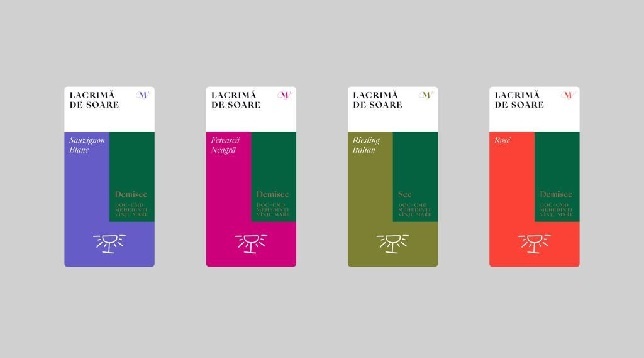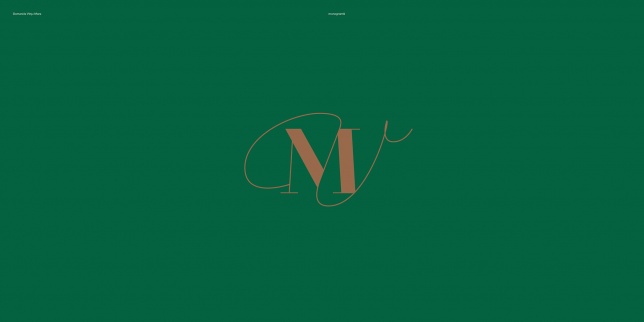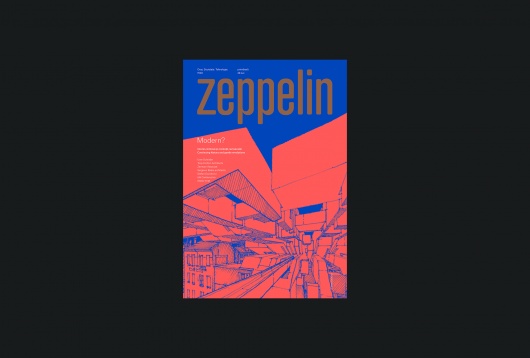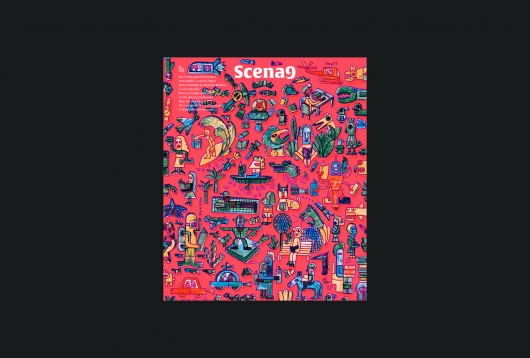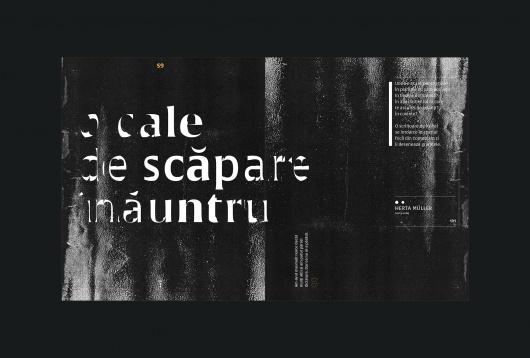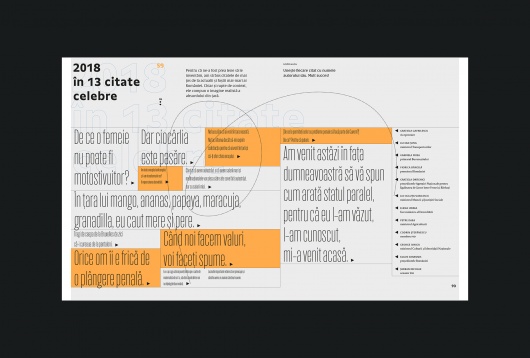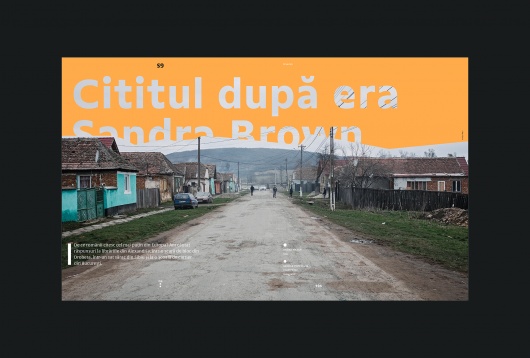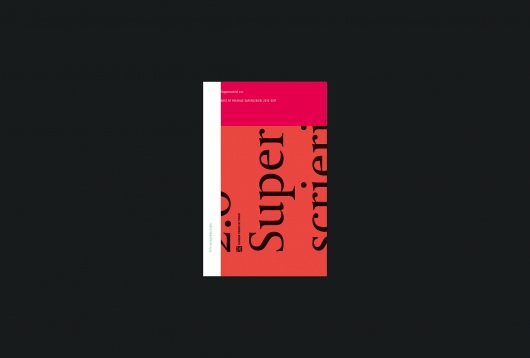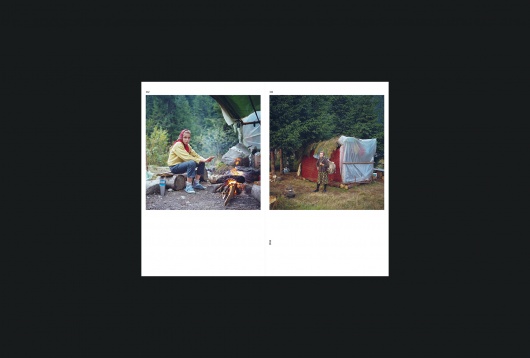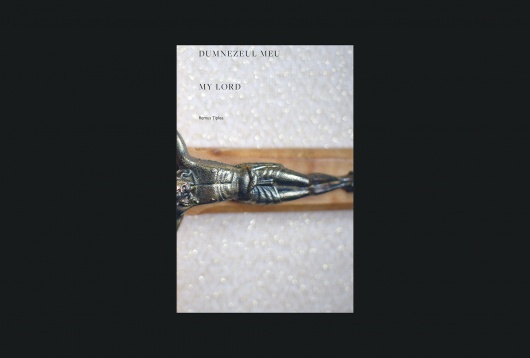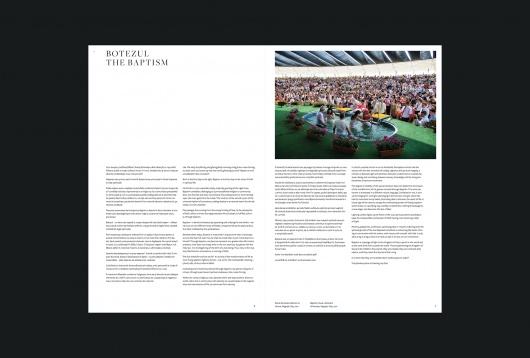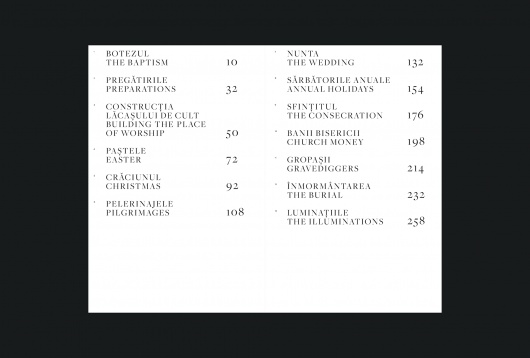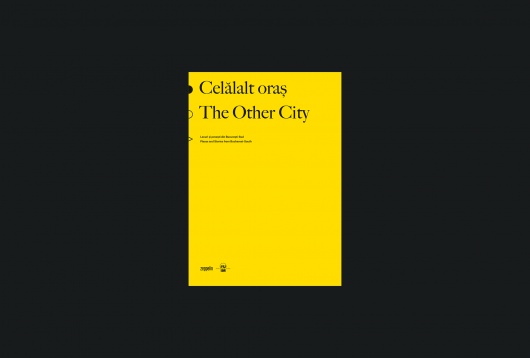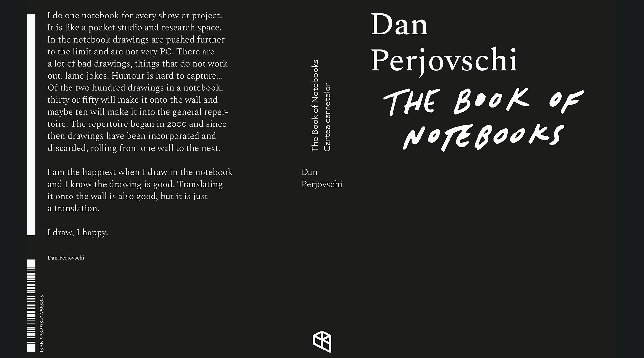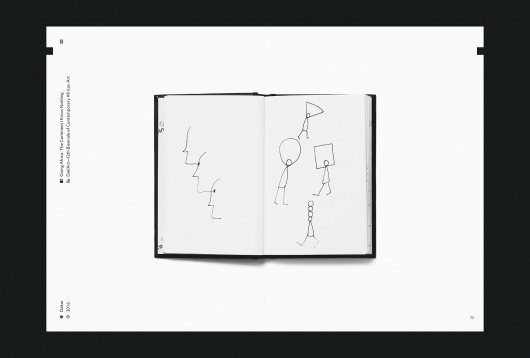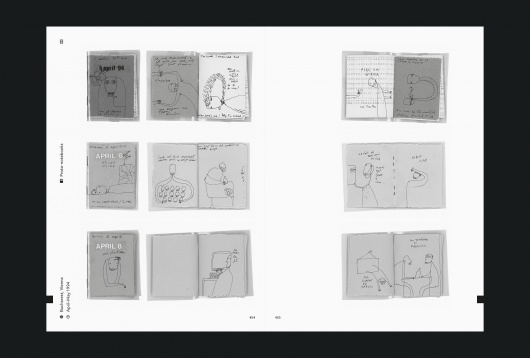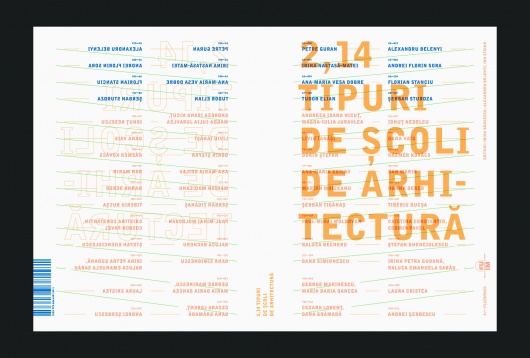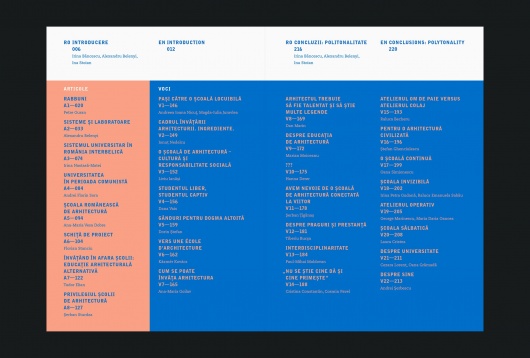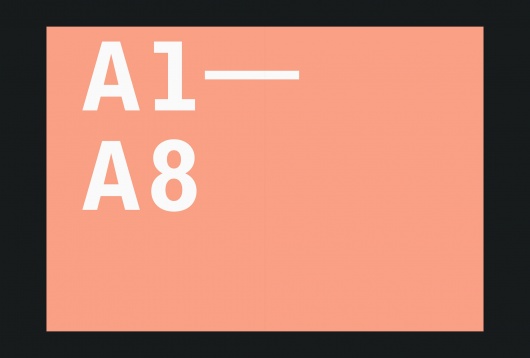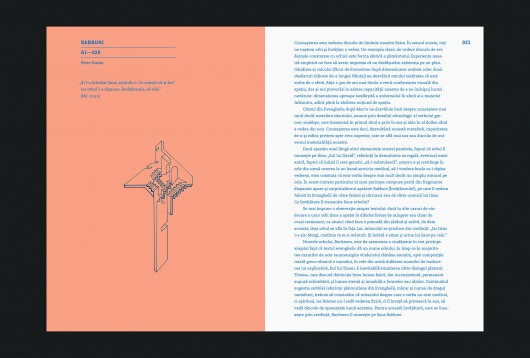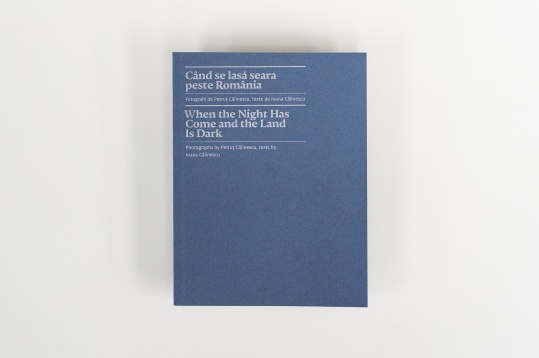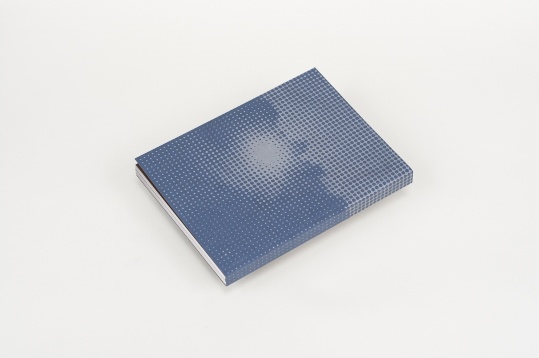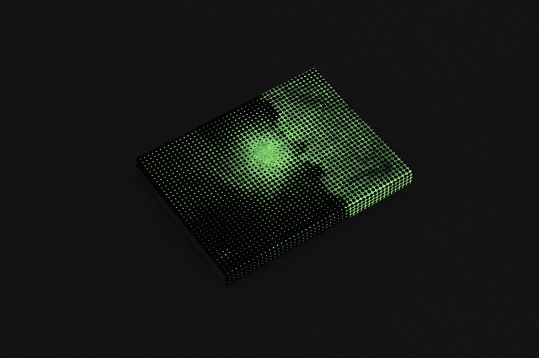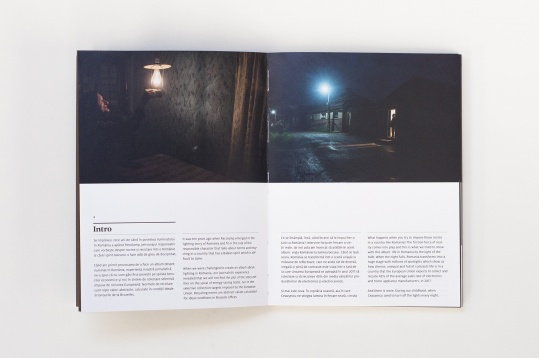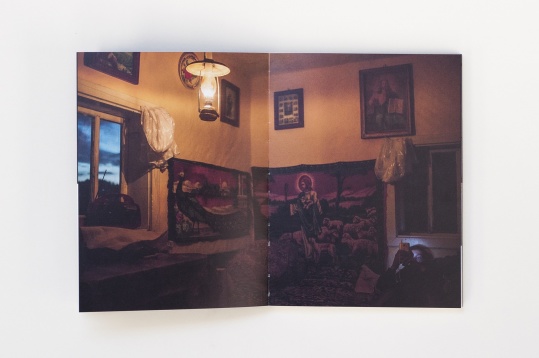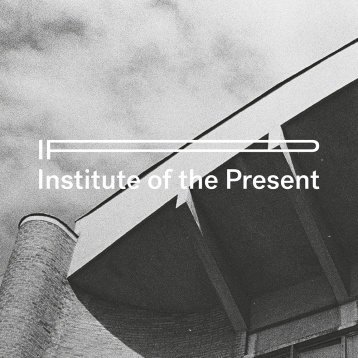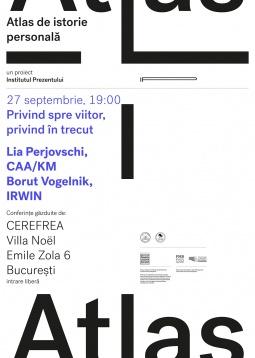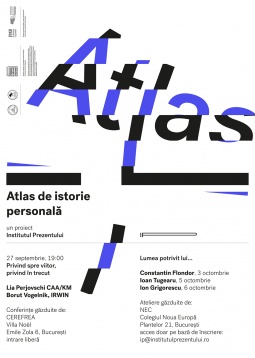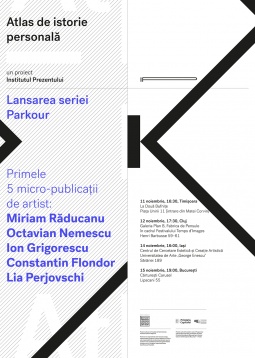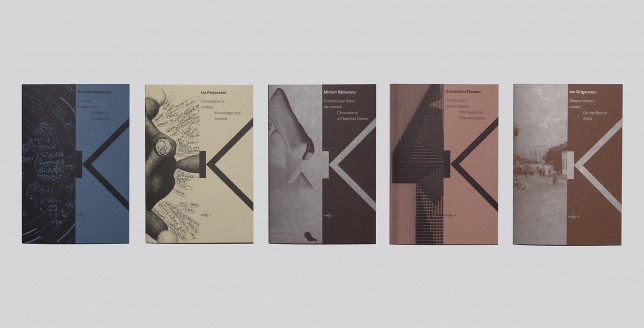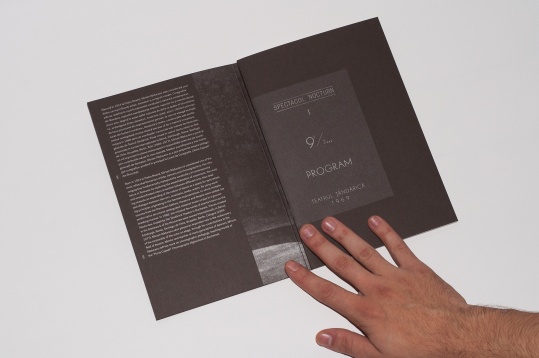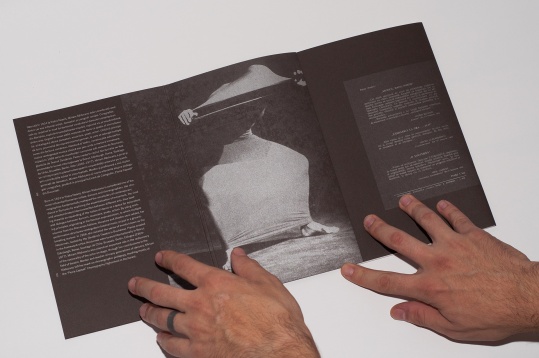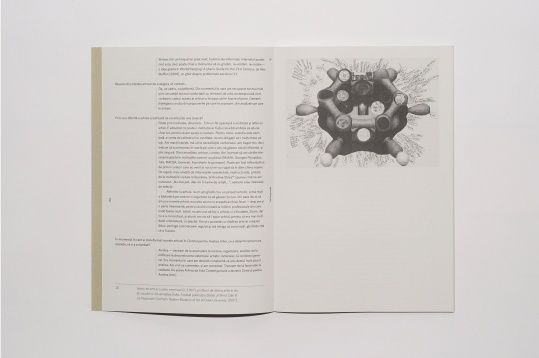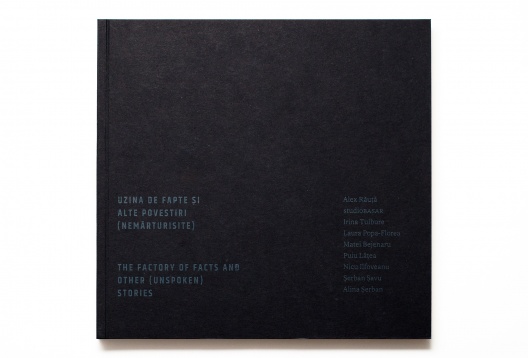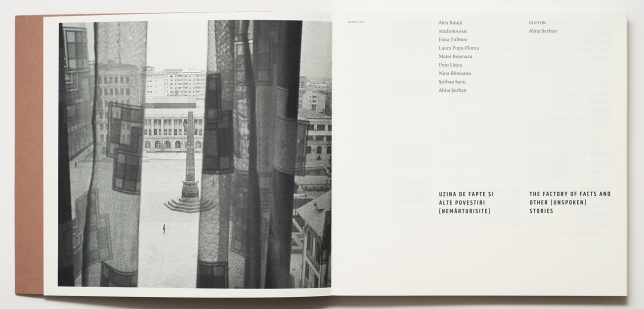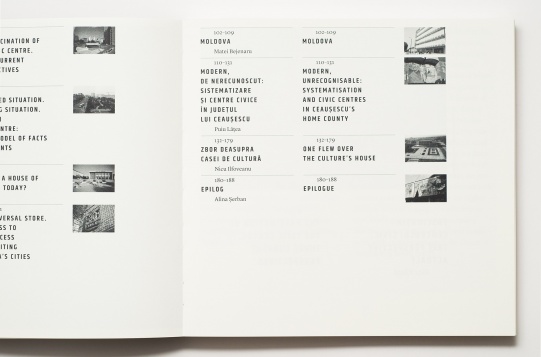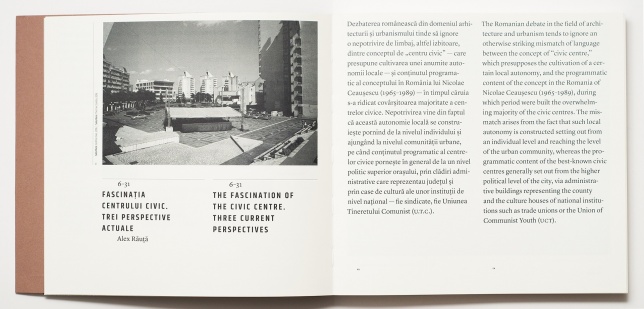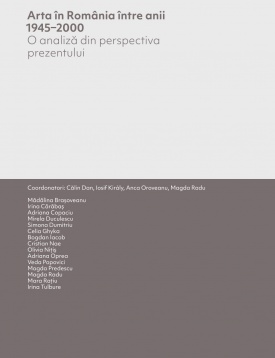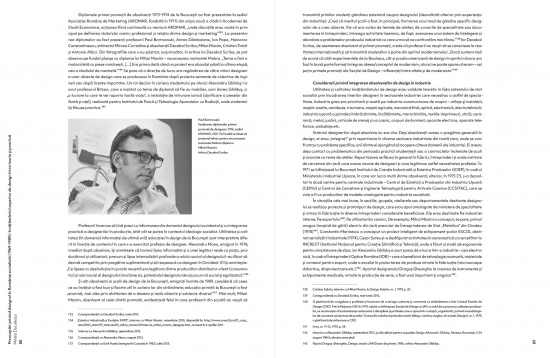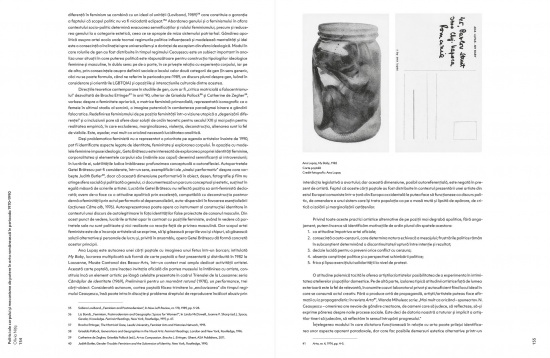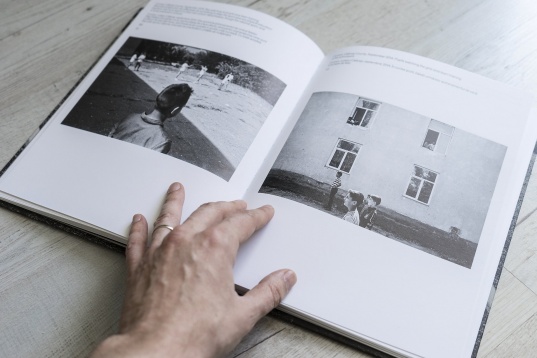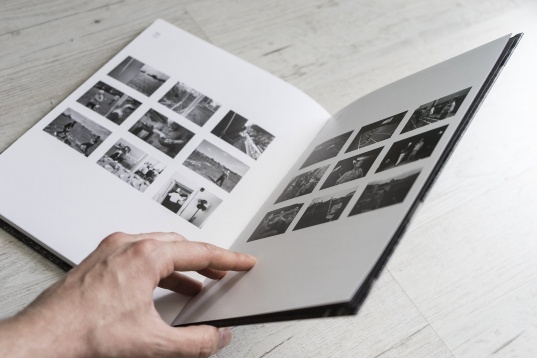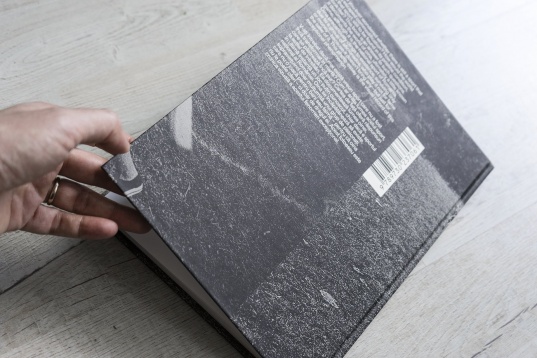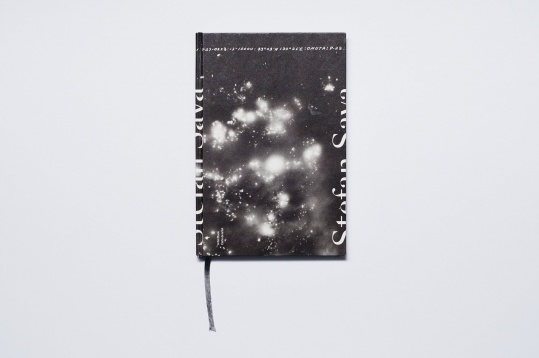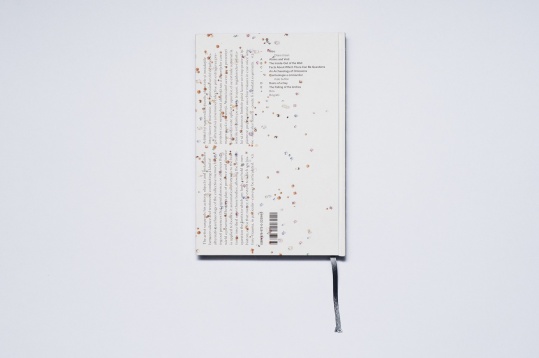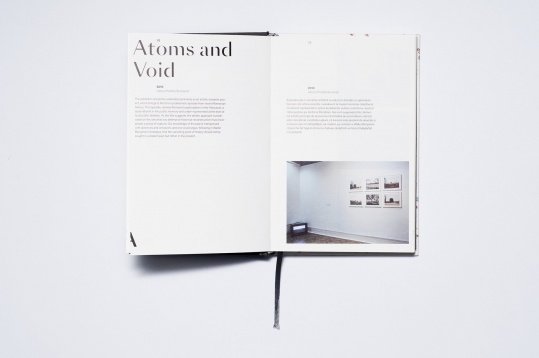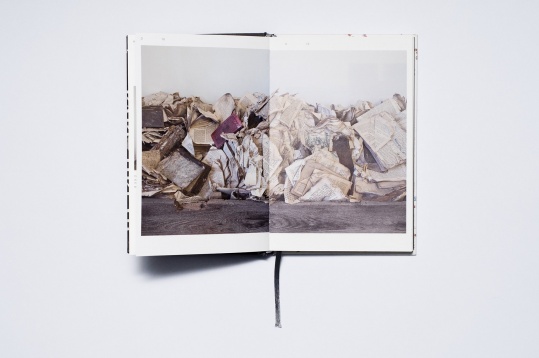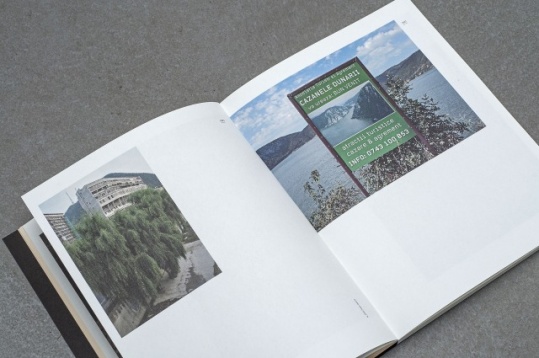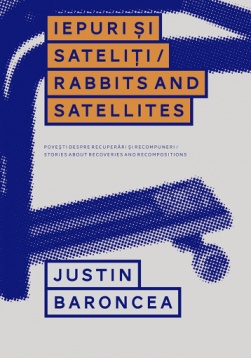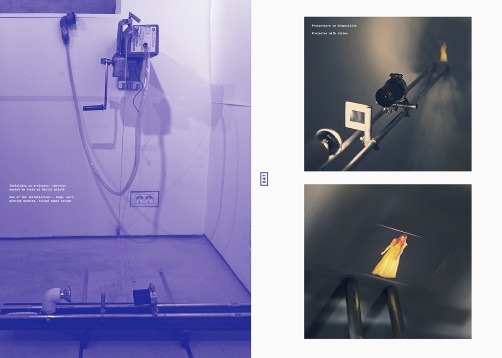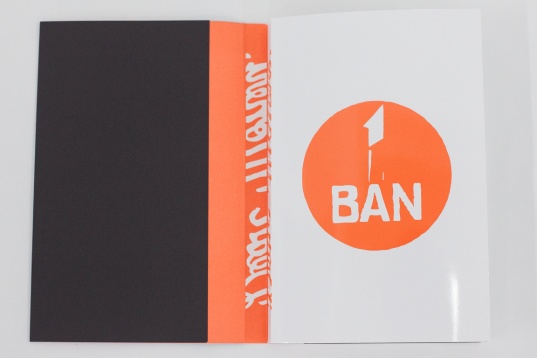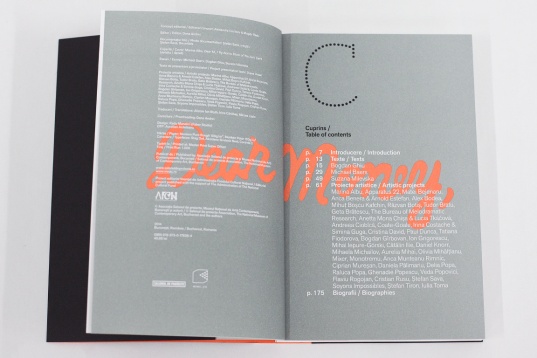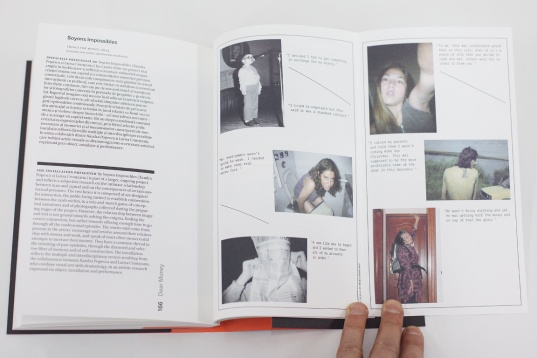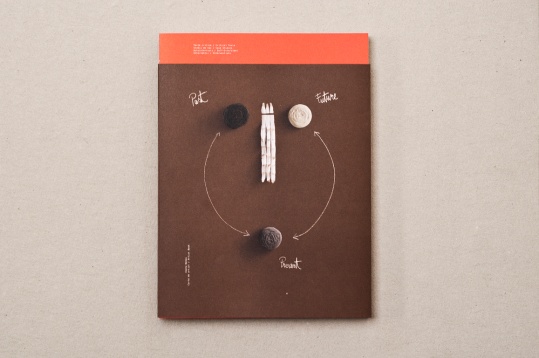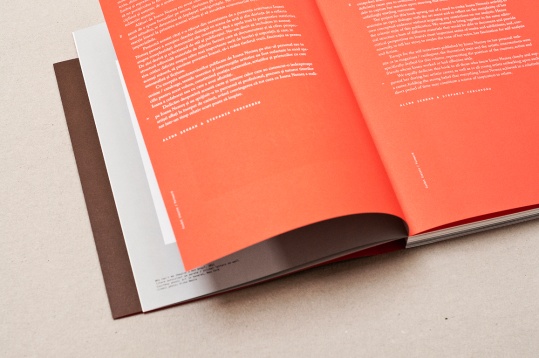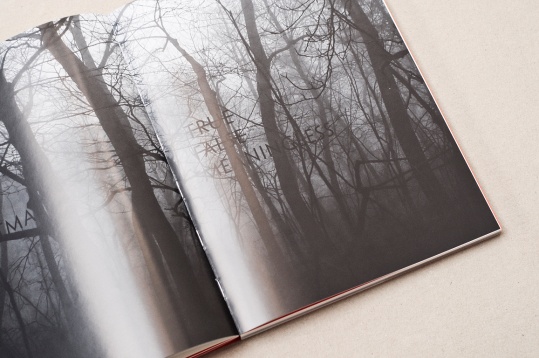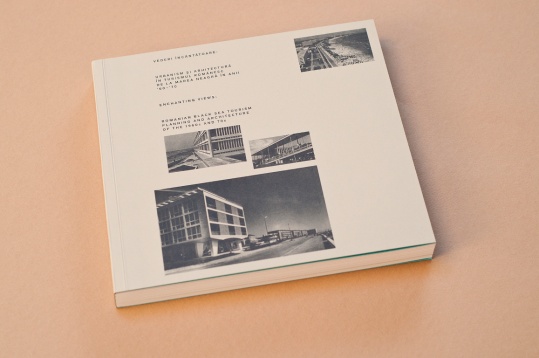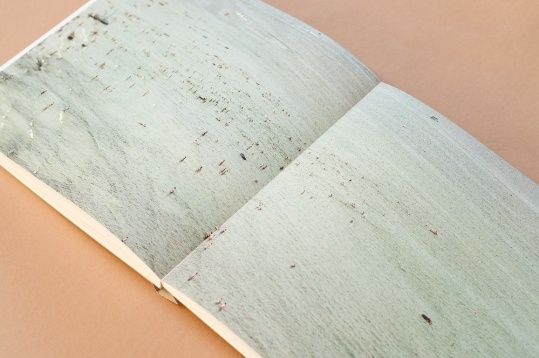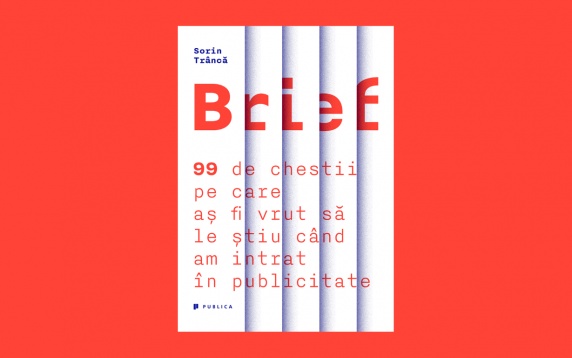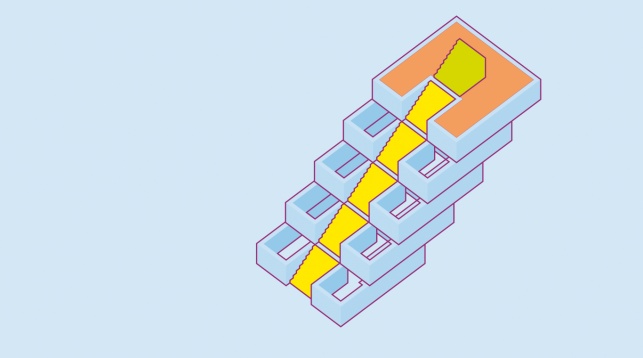HISTORY
Radu Manelici is a Romanian designer working at the intersection of multiple fields, with a keen interest in the processes behind visual language. Radu graduated from the National University of Arts in Bucharest, Graphic Design section, in 2008, where he now teaches and is enrolled as a PhD student. Radu is currently associate designer at Faber Studio.
SPECIFIC
His activity so far has spread across many branches of design (product, scenography, graphic design and typedesign). His work generally exhibits his appeal for systems and grids which he uses to build designs and order content in general.
ROMANIAN DESIGN WEEK APPEARANCES
2019 // CdFD Collection
The CdFD collection was born as a result of the grants awarded in 2017 by the Romanian Documentary Photography Center—Lucian Bran, Cosmin Bumbuţ and Elena Stancu, Bogdan Croitoru, Nicu Ilfoveanu and Puiu Lăţea, Alex Tomazatos—to which were added two projects of the CdFD cofounders—Ioana Cîrlig and Petruţ Călinescu.
On their birth certificate, it is written the son or daughter of “Natural.” Places in Romania where meteorites have fallen. Protected wildernesses, built on the ruins of a former grandiose project on the outskirts of the city. How many people and how much road dust at the fair. Searching for viruses in the marshes and forests of the Danube Delta. The Stepanek girls and the Facebook hill.
2019 // Domeniile Vînju Mare & Lacrimă de Soare
Domeniile Vînju Mare is a high caliber player in the very competitive Romanian wine environment. Lacrimă de Soare is the brand under which the youngest wine in the company's portfolio is marketed. The whites and rosés from this range are taken out to the public the following year and the reds are launched a year later. Thus, there is enough time for the acidity levels to become quite civilized, while the wines still keep their freshness and fruity scents.
But the most important quality of wines in this range is sincerity. In the short span they spend in the wine cellar, they do not receive the seasoned spoils of the barrique, or the wisdom that comes with the micro-oxygenation process, but whoever tries them will have the opportunity to discover a wine made with regards for all the rules of the craft, in one of the most famous wine areas of Romania, which reached the shelf as soon as the wine gurus from Vînju and Mrs. Nature had given their consent.
2019 // Scena9 Magazine
Scena9 is a magazine devoted to arts, culture and ideas. It is a yearly publication and its first issue was launched in December 2018, as a printed extension of the daily www.scena9.ro. It is the brainchild of an entire team of journalists, designers, writers, researchers, photographers and illustrators, and it is meant to create an immersive and powerful reading experience. Scena9 wishes its 200+ pages would engulf its readers and offer them a quiet, but playful space for reflection, within our daily digital hustle. The content of the magazine—exclusively published in the printed edition—explores a wide range of territories: from education, justice and health, to arts, religion, philosophy and technology. This first issue, a meeting place for some of the most relevant contemporary creators in Romania, is rather a cultural map of our country and of our world, the way we see it in 2018–2019.
2019 // Superscrieri 2.0
Superscrieri 2.0 is an anthology comprising 23 journalistic pieces, winners of the most important prizes, both honorific and within the competition, awarded by the Superscrieri Gala between 2015 and 2017. These groundbreaking nonfiction pieces radiograph a consistent part of the pressing issues affecting the Romanian society during the last few years, thoroughly documented by 30 of the best journalists in the country. The journalistic investigations included in this volume open a wider angle on Romania by observing its medical system, its judicial system, corruption at the highest levels or the way in which public funds are spent, but, at the same time, by acknowledging the life and actions of the unknown heroes that live amongst us.
2019 // Remus Țiplea. My Lord
“My Lord is not a theological study, My Lord is not a project on six different religious communities—it is a project that disparately connects and unites, through the God within us.” - Remus Țiplea
2019 // The Other City
There are some peculiar maps in this guide, as well as a lot of stories, photographed and in writing: stories about beautiful old and new houses; about historical parks and the industrial heritage; about endless apartment buildings, houses that grow above the streets, about the urban vernacular and the independent cultural centers; about radical visual artists, curators, dancers, architects, designers, doctors, writers, community activists, social entrepreneurs. We pay a visit to Victoria, Jana, Marioara, Leana and Geta, a group of ladies from an unjustly maligned neighborhood. Also showing up are the houses of avant-garde writers, a sexy swamp, and dozens of mayors, each allowed a dozen minutes term.
It’s a book for the passionate traveler, the city lover and for those interested in the way ‘bad’ cities or city parts manage on their own. It’s also a book for those in love with the eternal and world-wide South.
Coordinators: Calin Dan, Iosif Király, Anca Oroveanu, Magda Radu
Authors: Madalina Brasoveanu, Irina Carabas, Adriana Copaciu, Mirela Duculescu, Simona Dumitriu, Celia Ghyka, Bogdan Iacob, Cristian Nae, Olivia Nitis, Adriana Oprea, Veda Popovici, Magda Predescu, Magda Radu, Mara Ratiu, Irina Tulbure
Proofreading: Lavinia Ivascu
Design: Radu Manelici (Faber Studio)
DTP: Ioan Olteanu
Production: Fabrik
Published by: Fundatia Noua Europa, Bucuresti/Editura UNArte, Bucuresti/MNAC, Bucuresti
2017 // Oina
Have you ever wondered whether there is still a sport that has escaped commodification? How would the world of that sport, still to be found in its pristine condition, look like? This book is an answer to such questions. It documents the world of oina, ultimately a little known game, although it is the national sport of Romania. Oina precariously clings to existence, surviving only due to a group of aficionados, who play it not for fame or money—because it doesn’t bring any—but just for the sake of it. This photo?essay is the visual record of this exceptional phenomenon.
Photographs, texts: Bogdan Boghitoi, Sorin Vidis
Design: Radu Manelici
DTP: Aurelian Ardeleanu
Production: Imprimeria Arta Grafica
2017 // Stefan Sava—Artist Book
Stefan Sava—Artist Book is the first publication to gather and convey Stefan Sava’s artistic endeavour from its inception to present day. Conceived by the artist according to his own (self)representational choosing, the structure of the book closely follows the logic of his complex projects, which succeed coherently in time and materialise in space into temporary exhibitions. The many dimensions of these transient experiences—concept, discourse, image, thing, space, time—benefit from the most well?suited archiving and presentation inside an artist book, which functions both as artistic documentation and artwork in itself. (Diana Ursan)
Editor: Diana Ursan
Author: Stefan Sava
Essay: Kate Sutton
Translations: Alistair Ian Blyth, Ciprian ?iulea, Diana Ursan
Proofreading: Cristina Bogdan, Diana Ursan
Design: Radu Manelici (Faber Studio)
DTP: Aurelian Ardeleanu
Printed at: Fabrik
Published by: Ivan Gallery
2016 // RO_Archive: An Archive of Romania in Times of Transition
RO_Archive is an on-going investigation into the recuperation and valorisation of recent memory, set underway in 2007 by a team of young artists and theorists.
As its primary aim, the artistic research set out to [de]construct the image of a Romania recently integrated into the European Union and to expose the indifference towards the proliferation in the media of representations of uncertain artistic and documentary value. In a period in which the conjunction between truth and aesthetic value is being rethought, RO_Archive disassociates itself from the derisory spectacle of media representations dominated by cliché.
2016 // Rabbits and Satellites: Stories about Recoveries and Recompositions
Justin Baroncea and his colleagues gathered vinyls, radiator elements, metal cabinets, camera lenses, jars and milk boxes, pieces of vanished buildings, skis, drawing boards and recomposed them in over a hundred lamps, tables, chairs and benches. Those initial objects are the main characters of the book. They all brought their own histories but also their potential to transform and to become part of new projects, that do not cancel the original story, but help it grow.
2105 // Enchanting Views – Romanian Black Sea Tourism Planning and Architecture of the 1960s and 70s
2015 // Dear Money
2013 // Mix of illustrations, type and lettering
Radu Manelici is a Romanian designer working at the intersection of multiple fields, with a keen interest in the processes behind visual language. Radu graduated from the National University of Arts in Bucharest, Graphic Design section, in 2008, where he now teaches and is enrolled as a PhD student. Radu is currently associate designer at Faber Studio.
SPECIFIC
His activity so far has spread across many branches of design (product, scenography, graphic design and typedesign). His work generally exhibits his appeal for systems and grids which he uses to build designs and order content in general.
ROMANIAN DESIGN WEEK APPEARANCES
2019 // CdFD Collection
The CdFD collection was born as a result of the grants awarded in 2017 by the Romanian Documentary Photography Center—Lucian Bran, Cosmin Bumbuţ and Elena Stancu, Bogdan Croitoru, Nicu Ilfoveanu and Puiu Lăţea, Alex Tomazatos—to which were added two projects of the CdFD cofounders—Ioana Cîrlig and Petruţ Călinescu.
On their birth certificate, it is written the son or daughter of “Natural.” Places in Romania where meteorites have fallen. Protected wildernesses, built on the ruins of a former grandiose project on the outskirts of the city. How many people and how much road dust at the fair. Searching for viruses in the marshes and forests of the Danube Delta. The Stepanek girls and the Facebook hill.
2019 // Domeniile Vînju Mare & Lacrimă de Soare
Domeniile Vînju Mare is a high caliber player in the very competitive Romanian wine environment. Lacrimă de Soare is the brand under which the youngest wine in the company's portfolio is marketed. The whites and rosés from this range are taken out to the public the following year and the reds are launched a year later. Thus, there is enough time for the acidity levels to become quite civilized, while the wines still keep their freshness and fruity scents.
But the most important quality of wines in this range is sincerity. In the short span they spend in the wine cellar, they do not receive the seasoned spoils of the barrique, or the wisdom that comes with the micro-oxygenation process, but whoever tries them will have the opportunity to discover a wine made with regards for all the rules of the craft, in one of the most famous wine areas of Romania, which reached the shelf as soon as the wine gurus from Vînju and Mrs. Nature had given their consent.
2019 // Scena9 Magazine
Scena9 is a magazine devoted to arts, culture and ideas. It is a yearly publication and its first issue was launched in December 2018, as a printed extension of the daily www.scena9.ro. It is the brainchild of an entire team of journalists, designers, writers, researchers, photographers and illustrators, and it is meant to create an immersive and powerful reading experience. Scena9 wishes its 200+ pages would engulf its readers and offer them a quiet, but playful space for reflection, within our daily digital hustle. The content of the magazine—exclusively published in the printed edition—explores a wide range of territories: from education, justice and health, to arts, religion, philosophy and technology. This first issue, a meeting place for some of the most relevant contemporary creators in Romania, is rather a cultural map of our country and of our world, the way we see it in 2018–2019.
2019 // Superscrieri 2.0
Superscrieri 2.0 is an anthology comprising 23 journalistic pieces, winners of the most important prizes, both honorific and within the competition, awarded by the Superscrieri Gala between 2015 and 2017. These groundbreaking nonfiction pieces radiograph a consistent part of the pressing issues affecting the Romanian society during the last few years, thoroughly documented by 30 of the best journalists in the country. The journalistic investigations included in this volume open a wider angle on Romania by observing its medical system, its judicial system, corruption at the highest levels or the way in which public funds are spent, but, at the same time, by acknowledging the life and actions of the unknown heroes that live amongst us.
2019 // Remus Țiplea. My Lord
“My Lord is not a theological study, My Lord is not a project on six different religious communities—it is a project that disparately connects and unites, through the God within us.” - Remus Țiplea
2019 // The Other City
There are some peculiar maps in this guide, as well as a lot of stories, photographed and in writing: stories about beautiful old and new houses; about historical parks and the industrial heritage; about endless apartment buildings, houses that grow above the streets, about the urban vernacular and the independent cultural centers; about radical visual artists, curators, dancers, architects, designers, doctors, writers, community activists, social entrepreneurs. We pay a visit to Victoria, Jana, Marioara, Leana and Geta, a group of ladies from an unjustly maligned neighborhood. Also showing up are the houses of avant-garde writers, a sexy swamp, and dozens of mayors, each allowed a dozen minutes term.
It’s a book for the passionate traveler, the city lover and for those interested in the way ‘bad’ cities or city parts manage on their own. It’s also a book for those in love with the eternal and world-wide South.
2018 // 2.14 Types of Architecture Schools
“The volume 2.14 Types of Architecture Schools attempts a radiography – heterogeneous, uneven, present – of the subject discussed globally, but mainly locally. It strives to open the subject to the public and to contextualize things for the first time, it offers a series of levers, but also vectors for those preoccupied by the subject – who are in fact more than at first sight. The Romanian civil society is consolidating fast lately and it already has on its agenda the issue of the built environment quality or the state of the patrimony: education environments should rapidly build their ability to provide answers and especially guidelines for the future.
2.14 Types of Architecture Schools is our endeavor to contribute to this future.” - Irina Băncescu, Alexandru Belenyi, Ina Stoian
2018 // When the Night Has Come and the Land Is Dark
“When we were challenged to create an album about lighting in Romania, our journalistic experience revealed that we will not find the plot of the story neither on the spiral of energy saving bulbs, nor in the selective collection targets imposed by the European Union. Recycling norms are abstract values calculated for ideal conditions in Brussels offices.
What happens when you try to impose those norms in a country like Romania? The friction force of reality comes into play and this is what we tried to show with this album: life in Romania by the light of the bulb. When the night falls, Romania transforms into a huge stage with millions of spotlights which show us how diverse, unequal and full of contrasts life is in a country that the European Union expects to collect and recycle 45% of the average sales rate of electronics and home appliance manufacturers, in 2017.” - Ioana & Petruț Călinescu
2018 // Dan Perjovschi. The Book of Notebooks
“I do one notebook for every show or project. It is like a pocket studio and research space. In the notebook drawings are pushed further to the limit and are not very PC. There are a lot of bad drawings, things that do not work out, lame jokes. Humour is hard to capture… Of the two hundred drawings in a notebook, thirty or fifty will make it onto the wall and maybe ten will make it into the general repertoire. The repertoire began in 2000 and since then drawings have been incorporated and discarded, rolling from one wall to the next.
I am the happiest when I draw in the notebook and I know the drawing is good. Translating it onto the wall is also good, but it is just a translation.
I draw, I happy.” - Dan Perjovschi
2018 // IP—The Institute of the Present
IP—The Institute of the Present is a research and an artist resource platform in the field of visual and performing culture conceived by Ștefania Ferchedău and Alina Șerban. Centered on artists and their personal accounts, on time-specific encounters and forms of (self) archiving, the Institute looks at various practices and situations from the recent past until today from a transnational and transcultural perspective.
2018 // The Parkour Series
The Parkour series provides first hand access to themes, notions and seminal encounters that became the core concern of influential artists from the Romanian visual and performative field, enabling them to produce an unparalleled body of work. The series looks at a limited array of artistic projects and experiences, through the use of interview as an instrument of recording unmediated narratives. The format provides the reader with an overview upon the particular spatial and material condition of their practice, the ideas encompassed by their work, the shared histories and influences, personal beliefs and the ongoing process of conceptualizing their work.
2018 // The Factory of Facts and Other (Unspoken) Stories
“A surprising book, which, from the poetic and well found title, The Factory of Facts and Other (Unspoken) Stories to the alert assemblage of texts/images, interrogates and puts forward a reading of the socialist public space via what constituted its new milestones: the civic centre, the house of culture, and the universal store. These three complex objects are pertinently explored from various viewpoints, each of which restores to them different facets. Densely structured texts that examine the theoretical and historical sides of the objects in question are complemented by less unexpected approaches that resituate them in their post 1989 becoming. Masterfully orchestrating all the fragments that make up the volume, Alina Șerban places them in dialogue with exceptional period photographic material. Brought together, words and images set in motion the Factory of Facts of life (imagined/dreamed/real) in the socialist city.” - Carmen Popescu, architectural historian
2017 // Art in Romania between 1945–2000. An Analysis and a Reassessment from a Present-day Perspective
This collection of essays is the result of a research program organized an hosted by New Europe College—Institute for Advanced Study, and supported by the Getty Foundation. A proposal meant to be understood as a staring point for an open?ended project, it is a product of the self?perception of the field of the visual in Romania, realized in Romania, and determined, therefore, by a specific historic, economic and cultural context, for which it is all the more typical since it is the result of a collective effort.“The volume 2.14 Types of Architecture Schools attempts a radiography – heterogeneous, uneven, present – of the subject discussed globally, but mainly locally. It strives to open the subject to the public and to contextualize things for the first time, it offers a series of levers, but also vectors for those preoccupied by the subject – who are in fact more than at first sight. The Romanian civil society is consolidating fast lately and it already has on its agenda the issue of the built environment quality or the state of the patrimony: education environments should rapidly build their ability to provide answers and especially guidelines for the future.
2.14 Types of Architecture Schools is our endeavor to contribute to this future.” - Irina Băncescu, Alexandru Belenyi, Ina Stoian
2018 // When the Night Has Come and the Land Is Dark
“When we were challenged to create an album about lighting in Romania, our journalistic experience revealed that we will not find the plot of the story neither on the spiral of energy saving bulbs, nor in the selective collection targets imposed by the European Union. Recycling norms are abstract values calculated for ideal conditions in Brussels offices.
What happens when you try to impose those norms in a country like Romania? The friction force of reality comes into play and this is what we tried to show with this album: life in Romania by the light of the bulb. When the night falls, Romania transforms into a huge stage with millions of spotlights which show us how diverse, unequal and full of contrasts life is in a country that the European Union expects to collect and recycle 45% of the average sales rate of electronics and home appliance manufacturers, in 2017.” - Ioana & Petruț Călinescu
2018 // Dan Perjovschi. The Book of Notebooks
“I do one notebook for every show or project. It is like a pocket studio and research space. In the notebook drawings are pushed further to the limit and are not very PC. There are a lot of bad drawings, things that do not work out, lame jokes. Humour is hard to capture… Of the two hundred drawings in a notebook, thirty or fifty will make it onto the wall and maybe ten will make it into the general repertoire. The repertoire began in 2000 and since then drawings have been incorporated and discarded, rolling from one wall to the next.
I am the happiest when I draw in the notebook and I know the drawing is good. Translating it onto the wall is also good, but it is just a translation.
I draw, I happy.” - Dan Perjovschi
2018 // IP—The Institute of the Present
IP—The Institute of the Present is a research and an artist resource platform in the field of visual and performing culture conceived by Ștefania Ferchedău and Alina Șerban. Centered on artists and their personal accounts, on time-specific encounters and forms of (self) archiving, the Institute looks at various practices and situations from the recent past until today from a transnational and transcultural perspective.
2018 // Periferia B
“Barcelona Residence (Titan), Dream Town Residence (Berceni), SanPaul Villas (Rahova) these are some common names of the new real estate properties at the outskirts of Bucharest, the capital of Romania, and they say a lot about our collective dream.
Like a dream turning into a nightmare, moving to a better life turns into a vendetta with authorities, banks, neighbors.
Bucharest has always been a collective experience that each generations lives from the scratch, learning nothing from previous generations. If we peel off the legend with the shepherd called Bucur and the “Little Paris” glory, what remains is the essence of the same city defined by contrasts, extreme neighborhoods, a bizarre cocktail of styles and tastes.” - Petruț Călinescu
“Barcelona Residence (Titan), Dream Town Residence (Berceni), SanPaul Villas (Rahova) these are some common names of the new real estate properties at the outskirts of Bucharest, the capital of Romania, and they say a lot about our collective dream.
Like a dream turning into a nightmare, moving to a better life turns into a vendetta with authorities, banks, neighbors.
Bucharest has always been a collective experience that each generations lives from the scratch, learning nothing from previous generations. If we peel off the legend with the shepherd called Bucur and the “Little Paris” glory, what remains is the essence of the same city defined by contrasts, extreme neighborhoods, a bizarre cocktail of styles and tastes.” - Petruț Călinescu
2018 // The Parkour Series
The Parkour series provides first hand access to themes, notions and seminal encounters that became the core concern of influential artists from the Romanian visual and performative field, enabling them to produce an unparalleled body of work. The series looks at a limited array of artistic projects and experiences, through the use of interview as an instrument of recording unmediated narratives. The format provides the reader with an overview upon the particular spatial and material condition of their practice, the ideas encompassed by their work, the shared histories and influences, personal beliefs and the ongoing process of conceptualizing their work.
2018 // The Factory of Facts and Other (Unspoken) Stories
“A surprising book, which, from the poetic and well found title, The Factory of Facts and Other (Unspoken) Stories to the alert assemblage of texts/images, interrogates and puts forward a reading of the socialist public space via what constituted its new milestones: the civic centre, the house of culture, and the universal store. These three complex objects are pertinently explored from various viewpoints, each of which restores to them different facets. Densely structured texts that examine the theoretical and historical sides of the objects in question are complemented by less unexpected approaches that resituate them in their post 1989 becoming. Masterfully orchestrating all the fragments that make up the volume, Alina Șerban places them in dialogue with exceptional period photographic material. Brought together, words and images set in motion the Factory of Facts of life (imagined/dreamed/real) in the socialist city.” - Carmen Popescu, architectural historian
Coordinators: Calin Dan, Iosif Király, Anca Oroveanu, Magda Radu
Authors: Madalina Brasoveanu, Irina Carabas, Adriana Copaciu, Mirela Duculescu, Simona Dumitriu, Celia Ghyka, Bogdan Iacob, Cristian Nae, Olivia Nitis, Adriana Oprea, Veda Popovici, Magda Predescu, Magda Radu, Mara Ratiu, Irina Tulbure
Proofreading: Lavinia Ivascu
Design: Radu Manelici (Faber Studio)
DTP: Ioan Olteanu
Production: Fabrik
Published by: Fundatia Noua Europa, Bucuresti/Editura UNArte, Bucuresti/MNAC, Bucuresti
2017 // Oina
Have you ever wondered whether there is still a sport that has escaped commodification? How would the world of that sport, still to be found in its pristine condition, look like? This book is an answer to such questions. It documents the world of oina, ultimately a little known game, although it is the national sport of Romania. Oina precariously clings to existence, surviving only due to a group of aficionados, who play it not for fame or money—because it doesn’t bring any—but just for the sake of it. This photo?essay is the visual record of this exceptional phenomenon.
Photographs, texts: Bogdan Boghitoi, Sorin Vidis
Design: Radu Manelici
DTP: Aurelian Ardeleanu
Production: Imprimeria Arta Grafica
2017 // Stefan Sava—Artist Book
Stefan Sava—Artist Book is the first publication to gather and convey Stefan Sava’s artistic endeavour from its inception to present day. Conceived by the artist according to his own (self)representational choosing, the structure of the book closely follows the logic of his complex projects, which succeed coherently in time and materialise in space into temporary exhibitions. The many dimensions of these transient experiences—concept, discourse, image, thing, space, time—benefit from the most well?suited archiving and presentation inside an artist book, which functions both as artistic documentation and artwork in itself. (Diana Ursan)
Editor: Diana Ursan
Author: Stefan Sava
Essay: Kate Sutton
Translations: Alistair Ian Blyth, Ciprian ?iulea, Diana Ursan
Proofreading: Cristina Bogdan, Diana Ursan
Design: Radu Manelici (Faber Studio)
DTP: Aurelian Ardeleanu
Printed at: Fabrik
Published by: Ivan Gallery
2016 // RO_Archive: An Archive of Romania in Times of Transition
RO_Archive is an on-going investigation into the recuperation and valorisation of recent memory, set underway in 2007 by a team of young artists and theorists.
As its primary aim, the artistic research set out to [de]construct the image of a Romania recently integrated into the European Union and to expose the indifference towards the proliferation in the media of representations of uncertain artistic and documentary value. In a period in which the conjunction between truth and aesthetic value is being rethought, RO_Archive disassociates itself from the derisory spectacle of media representations dominated by cliché.
2016 // Rabbits and Satellites: Stories about Recoveries and Recompositions
Justin Baroncea and his colleagues gathered vinyls, radiator elements, metal cabinets, camera lenses, jars and milk boxes, pieces of vanished buildings, skis, drawing boards and recomposed them in over a hundred lamps, tables, chairs and benches. Those initial objects are the main characters of the book. They all brought their own histories but also their potential to transform and to become part of new projects, that do not cancel the original story, but help it grow.
2015 // Brief – 99 de chestii pe care aș fi vrut să le știu când am intrat în publicitate
What is most important regarding this book: I hope it to be useful to those who are (still) looking for their way.
2015 // Ioana Nemeș - Artist Book
This book is dedicated to Ioana Nemeș, in token of our friendship and admiration for the manner in which she understood to translate in her artistic practice the fragile and often conflicting threshold between inner reality and daily reality, between the personal and the abstract, between language and representation. Even after Ioana was no longer among us, we continued to take the same stance with respect to her personality and way of being, to her disciplined and genuine manner of supervising the materialization of her ideas, of conferring matter to subjective time.
2105 // Enchanting Views – Romanian Black Sea Tourism Planning and Architecture of the 1960s and 70s
This book provides a first critical survey of the extraordinary situation held by the Romanian Black Sea Coast project in the architectural practice of the 1960s and 70s. The assemblage of essays and photographs guides the reader through a trans-disciplinary analysis of the modernity of the Romanian seaside, examining in a methodical and nuanced way the distinctive character of the development plan. Bringing into play new theoretical perspectives and documents in order to renegotiate the numerous and complex dimensions of leisure architecture, the term representation becomes this anthology’s “vanishing point.”
2015 // Dear Money
The Dear Money project was inspired by a work of artist Marina Albu and consists of forty contributions submitted by artists with whom the curatorial programme Salonul de proiecte had worked until 2013. The works tackle the relationship between art and money from various angles, through the perspective of some of the most relevant Romanian artists working today. The project also provides the opportunity to look back on Salonul de proiecte’s activity, a program that functions within The National Museum of Contemporary Art, Bucharest.
2013 // Mix of illustrations, type and lettering



















